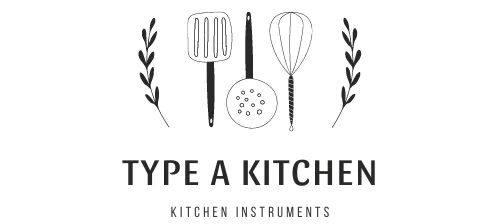Introduction
Pantry moths can be a pesky problem that many people face in their kitchens. These small insects are known for infesting pantry staples such as flour, rice, and cereal, causing contamination and food waste. Not only are they a nuisance, but pantry moths can also be difficult to get rid of once they have taken up residence in your kitchen. One of the first steps to tackling a pantry moth infestation is identifying the source of the problem. It’s important to inspect all pantry items for signs of infestation, such as webbing or larvae. Once you have identified the affected items, it is crucial to discard them immediately to prevent further spread of the moths.
To prevent future infestations, store all dry goods such as flour and grains in airtight containers made of glass or plastic. This will not only keep your stored items fresh but also prevent moths from accessing them. Regularly check your pantry for signs of reinfestation and promptly dispose of any affected items.
Overview of How to get rid of pantry moths in the kitchen
Pantry moths can be a frustrating and persistent problem in the kitchen. These pests are attracted to stored food items such as grains, cereals, and flour. The first step in getting rid of pantry moths is to identify infested items. Dispose of any infested items immediately by sealing them in a plastic bag before throwing them away. It is also recommended to thoroughly clean shelves, cabinets, and other areas where the moths may have spread.
Once you have removed infested items, it’s time to clean and sanitize your pantry area. Vacuuming shelves and crevices will help eliminate any remaining eggs or larvae. Wipe down surfaces with hot soapy water or vinegar to kill any lingering pests or eggs. Make sure to dry everything thoroughly afterward. By following these steps diligently, you can successfully eliminate pantry moths from your kitchen and keep them from returning in the future.
10 ways How to get rid of pantry moths in the kitchen.
1. Discard infested food items:
Start by inspecting your pantry thoroughly for signs of moth activity. Look for adult moths flying around or crawling larvae near the food containers. Once you have identified an infested item, seal it tightly in a plastic bag and dispose of it immediately in an outdoor trash bin away from your home. Additionally, remember to clean out your pantry regularly and throw away expired products promptly to minimize the risk of future infestations.
2. Vacuum pantry thoroughly:
Start by removing all food items from the pantry shelves and inspect them for any signs of infestation. Next, use a vacuum cleaner with a hose attachment to thoroughly clean every nook and cranny of the pantry. Once you have completed vacuuming, wipe down all surfaces with a solution of warm water and mild soap before restocking your pantry with fresh food items that are securely sealed in airtight containers.
3. Use pheromone traps:
To use a pheromone trap, simply place it near the area where you have noticed pantry moth activity, such as near your food storage or in your pantry. The trap will emit synthetic sex pheromones that will attract the male moths toward it. Once inside the trap, they become stuck on a sticky surface or are unable to escape, effectively trapping them and removing them from your kitchen environment.
4. Store food in airtight containers:
One effective way to prevent pantry moths in the kitchen is by storing food in airtight containers. Pantry moths are attracted to grains, cereals, flour, and other dry goods commonly found in pantries. By placing these items in airtight containers, you can create a barrier that prevents moths from accessing your food. This not only helps to keep your pantry moth-free but also ensures that your food remains fresh for longer periods.
5. Use bay leaves or cloves to repel moths:
One effective and natural way to repel moths in your pantry is by using bay leaves. These fragrant leaves have a strong aroma that moths find unpleasant, thus deterring them from infesting your food storage areas. Simply place a few bay leaves inside your pantry shelves or in containers of grains, flour, or other susceptible items. Remember to replace the leaves every few months to ensure continuous protection.
6. Clean pantry shelves with vinegar solution:
To clean the pantry shelves with a vinegar solution, mix equal parts of white vinegar and water in a spray bottle. Start by removing all items from the shelves and wiping them down with a damp cloth or sponge to remove any loose debris. Then, spray the vinegar solution onto the shelves and let it sit for a few minutes to allow it to penetrate any stubborn stains or residue. Next, scrub the shelves gently with a soft brush or sponge before rinsing them off with clean water.
7. Freeze susceptible items before storing them:
One effective method to eliminate pantry moths from your kitchen is by freezing susceptible items before storing them. Freezing susceptible items is a preventive measure that helps kill any eggs or larvae that may be present in the packaged goods. By subjecting these items to sub-zero temperatures for at least four days, you can effectively halt the life cycle of pantry moths and prevent future infestations.
8. Use mothballs or cedar blocks in the pantry:
Mothballs and cedar blocks are two common options for keeping pantry moths at bay. Mothballs contain chemicals like naphthalene or paradichlorobenzene that emit a strong odor to repel insects. Placing them in the pantry can deter moths from laying eggs or infesting stored food items.
9. Call a professional exterminator:
Hiring a professional exterminator can save you time and effort. They will conduct a thorough inspection of your kitchen, including all potential hiding spots for pantry moths, such as crevices, corners, and cracks. This ensures that every nook and cranny is treated properly, leaving no chance for reinfestation later on. Additionally, professionals have access to specialized equipment and products that are more effective than over-the-counter solutions.
10. Regularly check for signs of infestation and take preventative measures:
To prevent pantry moths from invading your kitchen, it is crucial to store all dry goods properly. Invest in airtight containers made of glass or plastic to keep pantry staples like flour, cereal, rice, and grains safe from potential moth contamination. Additionally, consider utilizing bay leaves or cedar chips as natural repellents; these can be placed inside cabinets or storage areas to deter pantry moths from entering.
Conclusion:
Pantry moths can be a pesky nuisance in the kitchen, but with the right approach, they can be eliminated. By taking preventative measures such as storing food in airtight containers and regularly cleaning the pantry, you can greatly reduce the risk of infestation. If you do find pantry moths in your kitchen, it is important to take immediate action to prevent further spread. Thoroughly clean all affected areas, discard infested items and consider using natural remedies or insecticides to eradicate any remaining moths. Remember, persistence is key when dealing with pantry moths – stay vigilant and maintain good hygiene practices to keep your kitchen moth-free. Take control of your pantry today and say goodbye to those unwanted pests!



